Socrates vs Darwin
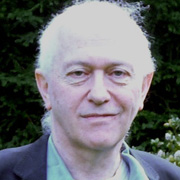
David Sedley, Laurence Professor of Ancient Philosophy, presented the Lady Margaret Lecture on Wednesday 6th May 2009. This is a transcript of his lecture. Copyright David Sedley 2009.
Socrates vs Darwin
Ancient Greek history records numerous occasions on which the bones of legendary heroes were rediscovered. Again and again big bones were dug up, and sometimes they were washed ashore by the sea, or found projecting from eroded cliffs. Almost invariably these bones were deemed to be those of identifiable figures from the legendary heroic age, in which men were reputed to have been of far bigger stature than their feeble modern descendants. The heroes whose bones were supposedly rediscovered in this way, often to be repatriated and reburied with great honours, included Theseus, Pelops, Orestes, Ajax, and even the giants killed in the war between gods and giants.
Scholars have noticed that the locations of these reported finds again and again correspond to areas of Greece rich in fossils. There is very little doubt that what were being mistaken for outsized human remains were in reality the bones of large extinct creatures, usually mammals. Why the mistake? Why did the Greeks not realise that they had in their hands evidence for extinctions of entire species?
The question, explored in an enthralling book by Adrienne Mayor entitled The First Fossil Hunters, lies in the immediate background to my topic today. Greece, home of the first Western culture to address scientifically the question of the origin of species, is also a country exceptionally rich in fossils. Why did the Greeks not connect the two?
By Darwin’s day, the fossil record made the existence of extinct species a virtually unavoidable fact, and it was able to play a major part in the debate to which Darwin made his seminal contribution. The Darwin experts (among whom I certainly do not number myself) may disagree about how formative a role the evidence of extinctions played in Darwin’s arrival at his evolutionary theory, but the fact remains that in the very first sentence of The Origin of Species he cited as a special influence his observation while in South America of the geological relation of present to past species. He is agreed to have been referring here to his experience while in Argentina of identifying the remains of a megatherium as those of an extinct species, some years before the Beagle’s arrival at the Galapagos.
My own conjecture as to how the Greeks managed to miss the significance of these big bones is as follows. Most of the famous finds of them were deep underground: for example, the so-called bones of Orestes were found while digging a well.
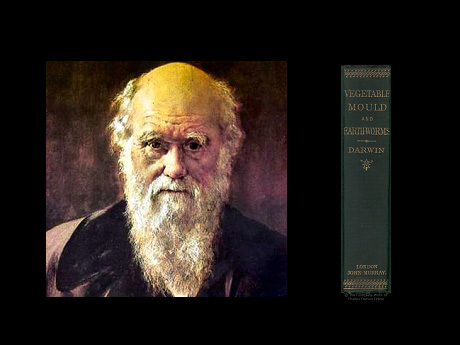 Unfortunately the ancients had insufficient understanding of the process of natural burial over centuries, a process which, by a curious historical irony, was fully explained for the first time by none other than Charles Darwin, in his 1881 bestseller Vegetable Mould and Earth Worms, especially in chapter 4, entitled ‘The part which worms have played in the burial of ancient buildings’. Lacking this understanding, the Greeks tended to assume that the bones had been deliberately buried, in which case they must be the bones either of humans, or of other races with human characteristics and customs, such as cyclopses and other species of giant. In no other way, it seemed, could the bones have come to be deep underground.
Unfortunately the ancients had insufficient understanding of the process of natural burial over centuries, a process which, by a curious historical irony, was fully explained for the first time by none other than Charles Darwin, in his 1881 bestseller Vegetable Mould and Earth Worms, especially in chapter 4, entitled ‘The part which worms have played in the burial of ancient buildings’. Lacking this understanding, the Greeks tended to assume that the bones had been deliberately buried, in which case they must be the bones either of humans, or of other races with human characteristics and customs, such as cyclopses and other species of giant. In no other way, it seemed, could the bones have come to be deep underground.
The nature of their mistake is confirmed, I believe, by a single exception, the solitary case in which an extinct non-humanoid species was recognized on the evidence of big bones. The island of Samos has fossil beds which are among the richest in Europe, and has even given its own name to an ancestor of the modern giraffe found there, the samotherium. Buried large skeletons, especially those of mastodons, are so widespread on Samos that it would be hard to mistake them for human-style burials. As a result, Samos acquired its own explanatory legend. A race of creatures known as the Neades had once lived there, it was said. They had been so noisy that eventually the earth opened up and swallowed them. Here then was a convenient explanation not only of the outsized bones, corresponding to no present-day species, that littered the island, but also of the otherwise inexplicable fact that, without having been ceremonially buried, those bones were regularly found underground. The need for this special ad hoc explanation, that the earth swallowed them, confirms that the numerous more isolated discoveries of big bones underground were likely to be mistaken for heroic burials.
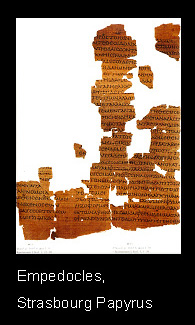 Lacking the stimulus of the fossil record, which was to play such a large part in 19th-century research, the Greek speculations on the origins of life paid little attention to the evidence of extinctions. The widespread scientific assumption was that the species now inhabiting the earth are, more or less, the only ones there have ever been. There was however an alternative if less respectable source of evidence for extinctions, and that was myth. Greek myths recorded from the legendary past a rich variety of hybrid creatures, such as the centaur (half man, half horse), the chimaera (an amalgam of lion, snake and goat) and the minotaur (half man, half bull). One early scientific speculator who made constructive use of this tradition was Empedocles, a Sicilian philosopher-poet of the mid 5th century BC, whose theories have been being studied with renewed vigour since the discovery, a decade ago, of new fragments of his poem among material retrieved from an Egyptian tomb. Empedocles seems to have taken the myths of hybrid monsters as a semi-historical record of species now extinct. He therefore talked of a past era in which a much larger number of species had existed, with only the fittest surviving to perpetuate their kind, humans included. Among those earlier species, the non-viable ones had been ill-fitted combinations of body parts, exemplified by creatures half man, half ox, unable to survive in the longer term.
Lacking the stimulus of the fossil record, which was to play such a large part in 19th-century research, the Greek speculations on the origins of life paid little attention to the evidence of extinctions. The widespread scientific assumption was that the species now inhabiting the earth are, more or less, the only ones there have ever been. There was however an alternative if less respectable source of evidence for extinctions, and that was myth. Greek myths recorded from the legendary past a rich variety of hybrid creatures, such as the centaur (half man, half horse), the chimaera (an amalgam of lion, snake and goat) and the minotaur (half man, half bull). One early scientific speculator who made constructive use of this tradition was Empedocles, a Sicilian philosopher-poet of the mid 5th century BC, whose theories have been being studied with renewed vigour since the discovery, a decade ago, of new fragments of his poem among material retrieved from an Egyptian tomb. Empedocles seems to have taken the myths of hybrid monsters as a semi-historical record of species now extinct. He therefore talked of a past era in which a much larger number of species had existed, with only the fittest surviving to perpetuate their kind, humans included. Among those earlier species, the non-viable ones had been ill-fitted combinations of body parts, exemplified by creatures half man, half ox, unable to survive in the longer term.
How had this earlier generation of randomly joined together creatures come about? Their initial body parts according to Empedocles had, surprisingly enough, been the product of divine craftsmanship. It was only the later joining up of these parts into complex creatures that was random, and for that very reason only partially successful. The initially created organs and limbs prominently included the eye, whose ingenious design and construction by a creator goddess he described in some detail. Anticipating the later creationist tradition, he treated the eye’s structure as a paradigm of intelligent design, and the more so in that, as he inferred from the evidence of present-day species, the original stock of eyes created must have included, among other variations, some built for daytime use, others for nocturnal vision.
The originally created limbs and organs were not, according to Empedocles’ description, a mere inert organ bank. Rather, these eyes, hands etc. were very simple creatures, each with just one specialism. Empedocles described an early phase in which they drifted around independently, although clearly with no prospect of long-term independent survival. Thus we must take it that complex organisms, such as ourselves, which were formed when these simple one-function creatures teamed up, started out not unlike what are now called ‘superorganisms’, for example ant colonies, in which fundamentally independent creatures function as organs of a larger whole.
In Empedocles’ theory we can see what from our own perspective may appear a puzzling mixture of divine creation and natural selection. The first generation of simple one-part organisms were designed, yet the complex clusters which these came to form, and of which we are among the survivors, were chance amalgams. Why so? His position may be not unlike that of the modern Intelligent Design movement. ID typically acknowledges the evidence supplied by palaeontology that natural selection has taken place, but looks for explanatory gaps which, it hopes, can be filled only by postulating divine intervention at some stage of the process. Like the proponents of ID, Empedocles was not prepared to go so far as to attribute to mere accident functional components such as the eye, in which he like they discerned divine craftsmanship of a very high order. But when it came to how those components were combined and arranged into complex organisms, he can be seen giving due weight to the mythical record of extinct species, taking this to show that accidental joining up of body parts, followed by survival of the fittest, must have played a part in determining the present-day range of complex organisms.
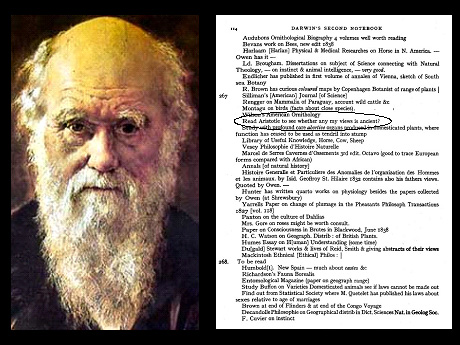 Empedocles’ own version of survival of the fittest has often been hailed as a partial anticipation of Darwinian evolution. Did Darwin himself know about it? His knowledge of classical antiquity was slight, as he confessed openly in the third edition of On the Origin of Species. The resemblance between his theory and that of Empedocles did eventually achieve some recognition in a footnote to the fourth edition, thanks to a reader’s tip-off, but unfortunately he there attributed the theory not to Empedocles but to Aristotle. In reality Aristotle was merely a conduit for Empedocles’ theory, which he himself considered ridiculous. In an 1838 notebook, listing things ‘to be read’, Darwin had included a note to himself ‘Read Aristotle to see whether any of my views is ancient?’. But he was not in fact to open a copy of Aristotle’s physical or biological works until the very last year of his life, when he would, finally, express deep admiration for what he found there. Writing to thank the naturalist and scholar William Ogle, who had sent him a copy of his new translation of Aristotle’s On the Parts of Animals, Darwin famously commented: ‘From quotations which I had seen I had a high notion of Aristotle’s merits, but I had not the most remote notion what a wonderful man he was. Linnaeus and Cuvier have been my two gods, though in very different ways, but they were mere school-boys to old Aristotle.’ (1)
Empedocles’ own version of survival of the fittest has often been hailed as a partial anticipation of Darwinian evolution. Did Darwin himself know about it? His knowledge of classical antiquity was slight, as he confessed openly in the third edition of On the Origin of Species. The resemblance between his theory and that of Empedocles did eventually achieve some recognition in a footnote to the fourth edition, thanks to a reader’s tip-off, but unfortunately he there attributed the theory not to Empedocles but to Aristotle. In reality Aristotle was merely a conduit for Empedocles’ theory, which he himself considered ridiculous. In an 1838 notebook, listing things ‘to be read’, Darwin had included a note to himself ‘Read Aristotle to see whether any of my views is ancient?’. But he was not in fact to open a copy of Aristotle’s physical or biological works until the very last year of his life, when he would, finally, express deep admiration for what he found there. Writing to thank the naturalist and scholar William Ogle, who had sent him a copy of his new translation of Aristotle’s On the Parts of Animals, Darwin famously commented: ‘From quotations which I had seen I had a high notion of Aristotle’s merits, but I had not the most remote notion what a wonderful man he was. Linnaeus and Cuvier have been my two gods, though in very different ways, but they were mere school-boys to old Aristotle.’ (1)
My purpose in this lecture is not to deplore Darwin’s neglect of classical antiquity – it is hard, after all, to see how he could have spent his life more fruitfully than he did. Rather, it is to bring him belatedly into dialogue with classical antiquity. One reason is as follows. The creationist tradition which Darwin’s work undermined was one whose roots lay in classical antiquity. Darwin may not have known those roots, but they had certainly been drawn on by many leading creationists, notably including William Paley, Fellow of Christ’s, whose Evidences of Christianity and Natural Theology Darwin studied assiduously while at the College.
Today creationism is enjoying a resurgence in some quarters. But whether in the guise of openly anti-scientific biblical literalism, or repackaged as the pseudo-scientific ‘Intelligent Design’, it is desperately short of intellectual respectability. In the ancient world its standing was altogether different. Well before the teachings of Genesis had begun to leave their mark on pagan thinkers, serious scientific debate was under way between creationists and anti-creationists – between, that is, those who asserted, and those who denied, that the world and its contents had been created by a divine intelligence. These two parties included most of the leading philosophers of the classical world, from the early 5th century onwards. And the creationists among them were making most of the running.
Fast forward briefly to the second century AD, when Galen, antiquity’s foremost medical authority, was busy promoting the creationist case. In his blockbuster treatise On the usefulness of the parts of the body, he exploited his unsurpassed knowledge of human anatomy to explain in minute detail the perfect adaptation of every body part to its precise functions – for example, why the design of the human hand simply could not have been bettered, right down to the precise number and arrangement of bones. In medicine, as in astronomy and other disciplines, it was the most advanced scientists who were doing most to promote the creationist cause. For the structural order that their research was uncovering everywhere, from the mathematical perfection of the heavenly rotations all the way down to the anatomical construction of the eyelashes, seemed inexplicable unless an intelligent creator was assumed. In a pre-Darwinian age, creationism was the natural occupant of the intellectual high ground.
When picking out a hero among his creationist forerunners, Galen’s surprising choice is Socrates. Surprising, because Galen was above all a scientist, whereas Socrates had been the most anti-scientific of all the major thinkers of antiquity. It was reputedly Socrates who, in the late 5th century BC, had turned philosophy away from the study of the physical universe, to focus instead on human lives and values.
Beyond all dispute, Socrates was a uniquely influential figure in the history of philosophy. He wrote nothing, but by his constant presence on the streets of Athens, invariably deep in conversation, he captivated many of those who heard him, and angered many others. In 399 BC those whom he angered were sufficiently influential to get him sentenced to death by an Athenian jury. His pupil Plato’s description of his last moments, as he calmly drank the cup of hemlock, is one of the defining moments in intellectual history, creating as it did the first philosophical martyr.
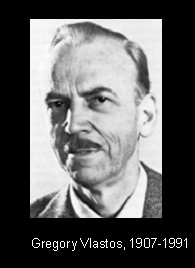 Love him or hate him, Socrates’ credentials as a seminal moral thinker are assured. But that he was also the father of creationism is one of the least-known facts about him. Current discussion of Socrates is dominated by the two books about him written by the late Gregory Vlastos a quarter of a century ago. Vlastos’s work on Socrates, in and around the academic year 1983-4 which he spent as Distinguished Visiting Fellow at Christ’s, has permanently raised the level of discussion to which Socrates’ ideas are subjected. But Vlastos’s focus was almost entirely on Socrates’ ethics and methodology, and he never turned the spotlight onto the surprisingly neglected evidence that Socrates was a pioneering creationist. In Vlastos’s aftermath, this theme has remained largely out of view. That Socrates is the founder of the tradition against which Darwin was working is in short a remarkably well-kept secret.
Love him or hate him, Socrates’ credentials as a seminal moral thinker are assured. But that he was also the father of creationism is one of the least-known facts about him. Current discussion of Socrates is dominated by the two books about him written by the late Gregory Vlastos a quarter of a century ago. Vlastos’s work on Socrates, in and around the academic year 1983-4 which he spent as Distinguished Visiting Fellow at Christ’s, has permanently raised the level of discussion to which Socrates’ ideas are subjected. But Vlastos’s focus was almost entirely on Socrates’ ethics and methodology, and he never turned the spotlight onto the surprisingly neglected evidence that Socrates was a pioneering creationist. In Vlastos’s aftermath, this theme has remained largely out of view. That Socrates is the founder of the tradition against which Darwin was working is in short a remarkably well-kept secret.
One reason for the neglect is no doubt that the key evidence is to be found, not in the exhilarating pages of Plato’s Socratic dialogues, but in the less exciting and less fashionable pages of Xenophon. Xenophon, like Plato, had known Socrates personally, and recorded his memories of him. Often he projected his own philosophical dullness onto Socrates, but sometimes something penetratingly original shines through, and nowhere more so than in the two chapters (2) that he devotes to Socrates’ views on divine creation. For the purposes of this lecture I have to set aside an old debate, which asks: given that Socrates wrote nothing, how do we know what we should believe and what we should disbelieve in the reports of him given by Plato, Xenophon and others? I shall content myself with the remark that, so far at least, all attempts to find another source than Socrates himself for the two chapters in question have failed.
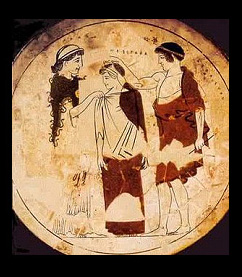 Socrates was admittedly not the first to speak of the gods as creators. I have already mentioned the creationist component in Empedocles’ theory, which predated Socrates’ own contribution. And in fact the theme goes back to the early poet Hesiod, c. 700 BC, who describes how the first woman, Pandora, created as a punishment for men, was designed and constructed by the craftsman god Hephaestus, aided by a whole technical support team of other gods and goddesses. What Socrates was, on Xenophon’s evidence, the first to introduce was not divine creation as such, but the key idea that creation is a special benefaction bestowed by god on mankind. According to him, the whole world, including lower animal species, has been created for human benefit. Creationism is not for Socrates any kind of scientific thesis, but on the contrary a pillar of religion. If the gods have done all this for us, we enjoy a unique relationship with them, one which we should express in religious devotion.
Socrates was admittedly not the first to speak of the gods as creators. I have already mentioned the creationist component in Empedocles’ theory, which predated Socrates’ own contribution. And in fact the theme goes back to the early poet Hesiod, c. 700 BC, who describes how the first woman, Pandora, created as a punishment for men, was designed and constructed by the craftsman god Hephaestus, aided by a whole technical support team of other gods and goddesses. What Socrates was, on Xenophon’s evidence, the first to introduce was not divine creation as such, but the key idea that creation is a special benefaction bestowed by god on mankind. According to him, the whole world, including lower animal species, has been created for human benefit. Creationism is not for Socrates any kind of scientific thesis, but on the contrary a pillar of religion. If the gods have done all this for us, we enjoy a unique relationship with them, one which we should express in religious devotion.
Piety was for Socrates a more fundamental value than it ever came to be again in the work of his pupil Plato, or in that of Plato’s own pupil Aristotle. And it played a key part in Socrates’ negative attitude towards the scientific speculations that his predecessors had indulged in. To attempt to uncover and reconstruct the details of god’s world-building benefactions, in the style of the natural philosophers, was in Socrates’ view to overreach one’s nature as a human being.
Socrates’ world contains a multiplicity of gods, subsumed under one supreme omnipresent and all-seeing divinity. These deities are not only our benefactors, but also the divine artisans who created our world and its contents, ourselves included. That the gods should do all this for us is not a matter of our mere good fortune. Gods are essentially good and beneficent, and we, as their primary beneficiaries, are linked to them by a unique bond. Study of the workings of nature is justified only to the extent that it confirms and deepens our understanding of the gods’ goodness to us. True piety lies, not in uncovering the hidden structures of nature, but in appreciating the intentions and outcomes of divine creation, and thus reinforcing the special relationship that links man to god.
This religious agenda undoubtedly helps explain why Socrates became the inventor of the Argument from Design. ‘Argument from Design’ is a generic title for that family of arguments which seek to prove the existence of god, or more specifically of a provident god, by cataloguing the evidence for design in the world. Typically, these arguments seek to demonstrate the existence of divine craftsmanship by appealing to the most prestigious creative craft practised by man, and showing that god’s creative powers are such as to dwarf their human counterpart.
As reported by Xenophon, Socrates’ own version of the Argument from Design appealed to the expertise of representational artists, and especially sculptors. If you admire above all others an artist like Polyclitus, who can make such exquisite human figures of bronze, how much more must you revere whoever it was who made living, breathing human figures like us! And there must indeed be such a maker, Socrates adds, because the structures and attributes of human beings are far too consistently beneficial ones to have been the outcome of mere accident. Socrates’ argument here centres on a detailed compilation of evidence for the beneficial purposes served by the construction of animal bodies. He cites, among many examples, the five senses, the provision of eyelids and lashes to protect the eye from damage, and the user-friendly arrangement of the teeth, with the front ones suitable for cutting food, the rear ones for grinding it.
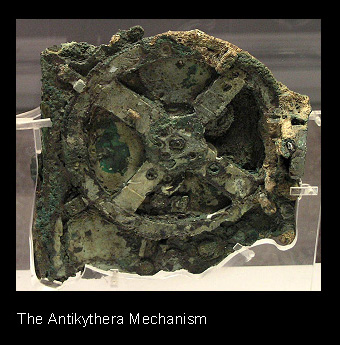 The best-known post-classical version of the Argument from Design is that of William Paley. Paley’s version developed the (by then quite common) comparison of the world and its natural contents to a watch. Someone happening upon a watch for the first time, he argued, could not but infer that “there must have existed, at some time and at some place or other, an artificer or artificers who formed it for the purpose which we find it actually to answer, who comprehended its construction and designed its use.” To trace the long line of descent to Paley’s watch from Socrates’ original Argument from Design, we need to bring in a key intermediary, the Stoics.
The best-known post-classical version of the Argument from Design is that of William Paley. Paley’s version developed the (by then quite common) comparison of the world and its natural contents to a watch. Someone happening upon a watch for the first time, he argued, could not but infer that “there must have existed, at some time and at some place or other, an artificer or artificers who formed it for the purpose which we find it actually to answer, who comprehended its construction and designed its use.” To trace the long line of descent to Paley’s watch from Socrates’ original Argument from Design, we need to bring in a key intermediary, the Stoics.
The Stoics were self-declared Socratic philosophers who sought to impose an up-to-date methodological rigour on Socrates’ key insights. The third and second centuries BC, in which Stoicism emerged, were also a time of stunning Greek achievements in engineering. Archimedes (third century BC) was the creator of a famous sphere which was said to reproduce accurately the cycles of the sun, moon and planets. A later version of this sphere was said to have been built by the Stoic philosopher Posidonius, in the early first century BC. In the absence of independent evidence for there having been such a technology in the ancient world, the reports were long assumed to be at best exaggerations. But the picture was dramatically changed by the discovery of the so-called ‘Antikythera mechanism’, found by sponge divers in 1900 on the sea bed near the Aegean island of Antikythera.

This encrusted lump of bronze was minutely examined by Derek De Solla Price, a former graduate student of Christ’s who had gone on to become Avalon Professor of the History of Science at Yale University. In his brilliant 1974 study, Gears from the Greeks, Price revealed, on the basis of x-ray evidence, that this object was in reality an extraordinarily complex astronomical calculator, with some thirty gear-wheels meshing in parallel planes. Recent studies by the Antikythera Mechanism Research Project have been able to advance and correct Price’s findings, and we now know it to have been a machine which correlated all the major solar and lunar cycles, predicting everything from the dates of eclipses all the way down to the four-year cycle of games which included the Olympics. Although not Archimedes’ own, this device is likely to be a direct descendant of it, datable around a century after his death.
I have emphasized these astonishing feats of engineering, because in Stoic thought they played a role closely analogous to Paley’s watch. The ancient Greek sphere and early 19th-century watch have it in common not just that each might claim to be the most minutely intricate man-made mechanism known to its respective era, but also that each in its own way displays a temporal cycle which accurately reproduces the temporal cyclicity of the world itself. In Paley’s age the celestial rotations were acknowledged to represent, not the view from the centre of the universe, but a deceptively eccentric one from a rotating earth itself orbiting the sun. In the geocentric era of Stoicism, by contrast, the heavenly bodies were generally assumed to be circling a central earth.
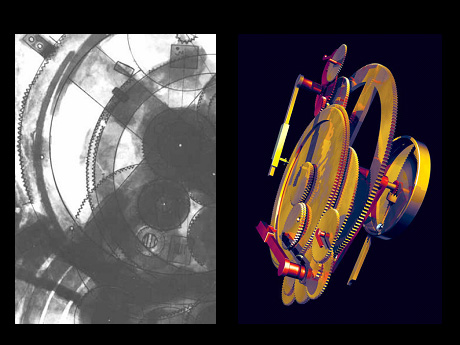
Hence the cycles charted by Archimedes’ sphere appeared to reproduce the complex rotation of the heaven around the earth far more closely and directly than anything in Paley’s heliocentric world could do. For all its complexity, Paley’s watch is a mechanism with little more to reproduce than, in effect, the diurnal rotation of the earth.
The Stoics were consequently in a position, when mounting their own mechanised version of Socrates’ Argument from Design, to devise one with a far richer cosmic significance than its later descendant in the writings of Paley. Their argument ran as follows. Consider the astronomical sphere made by Archimedes or Posidonius. If you were to transport it to the most barbarian place on earth – Scythia, perhaps, or Britain – even there the natives would have no difficulty in recognising it as the product of an intelligent creator. And what is the world itself, they added, if not the vastly superior original mechanism which these devices imitate in miniature? If so, how absurd it would be to doubt that the great original is itself the product of an intelligence, and, what is more, of an intelligence vastly superior to that of the great Archimedes.
It is time to go back to Socrates himself. In turning the spotlight onto divine creation, he was in a way doing no more than follow the lead of his own ethical agenda, and of three aspects of it in particular. First was his characteristic religiosity: he viewed his own philosophical project in Athens as a divinely commanded mission, and his conviction of god’s essential goodness brought him into a conflict with local religious practice sufficient to make possible his trial and execution on charges of religious innovation. The second factor was his interest in the nature of intelligence as a force which is essentially good-focused: although inspired by his ethical agenda and therefore concerned with specifically human intelligence, this interest was easily extended to the workings of divine intelligence, which Socrates therefore very naturally interpreted as directed to benevolent ends. The third factor was his fascination with the functioning of crafts, including the most humble of them, an interest so strong as to border on obsession. In the Socratic writings of Plato and Xenophon, a familiar complaint from Socrates’ auditors, amply borne out by the way he talks and argues, is that he endlessly harps on about shoemakers, builders, doctors, cooks, fullers, navigators and the like.(3) Why so? As a moral philosopher, Socrates was above all else interested in what it is to be good at something, and to succeed in doing good. To him the crafts practised all around him in Athens seemed to offer the best possible starting points: simple working models of systematically successful human practice, from which the far more demanding task of leading a good life might take its lead. In thinking of god too as a craftsman, he was turning that very same body of data to a further use. It was Socrates, and not Plato, who originated the long tradition of calling god a ‘demiurge’ or ‘craftsman’.
Socrates’ role as the inventor of the Argument from Design would already be enough to make him the inaugurator of the intellectual tradition against which Darwin was pitting himself. But there is more. In The Descent of Man, two of Darwin’s early chapters were devoted to countering the creationist thesis that man’s uniqueness as a rational being sets him apart from all other animal species. Here too, whether he knew it or not, Darwin was responding to a tradition founded by Socrates.
In Xenophon’s portrayal, Socrates argues for human uniqueness in two parallel ways. In both the relevant passages, the starting point is his concession that the Argument from Design in itself does not yet distinguish man from other species. A whole panorama of design features benefit man and the lower animals alike. Some of these are purely functional, such as the provision of food and water, of maternal instincts, and of a full set of sense-organs. Others reveal god’s concern for the physical comfort of his creations. For example, right across the animal kingdom, the eyes, tongue and nose have been positioned to maximize the enjoyment of food as it enters the mouth; but the waste products that subsequently leave animals’ bodies are unpleasing to the sense-organs, and that is why their exit route has considerately been placed at the rear, as far as possible from eyes, mouths and noses. Socrates concedes that nothing so far in the evidence for design suggests that man has been especially favoured. Nevertheless, he adds, there are independent indicators that god has especially favoured man.
One is that the animal kingdom itself possesses a hierarchical structure, with other species existing ultimately for the sake of man. This idea is not further elaborated by Socrates in the texts we have, but we can get a sense of where it was leading by looking ahead to its further development by, once again, Socrates’ Stoic heirs. The Stoics’ favoured example was the pig. The pig has clearly been created purely for human consumption, they maintained. Why then, if god did not care about the pig for its own sake, did he take the trouble to give it a soul? For just one reason, they replied: to keep the meat fresh. (4)
Socrates’ other indicator of man’s unique status in god’s eyes consists in the very large number of ways in which we have been advantaged beyond anything bestowed on other species. Some of the features listed here by Socrates, such as man’s allegedly innate religiosity, his rationality, and the use of language, were directly countered by Darwin in The Descent of Man. Socrates’ full list of privileges for which humans have been specially picked out includes in addition: upright posture, hands, crafts, and, most intriguingly of all, the unique privilege of non-seasonal sex. Thus not even fun is excluded from human beings’ god-given benefactions. But even fun has its limits: strikingly absent is another supposedly unique feature of man, later emphasized by Aristotle: the ability to laugh.
The mention of human descent, as it has been conceived since Darwin, invites at this point a brief excursion beyond Socrates himself and into the work of his most celebrated pupil, Plato. Plato inherited Socrates’ conviction that man is a divinely privileged species, but adapted it to his additional, Pythagorean belief that the soul transmigrates between species. Degraded souls move down the natural scale, first from men to women, and then on down into quadrupeds, and, lower still in a quite literal sense of ‘lower’, into legless creatures like snakes, and, below even them, into fish. But promotion is possible too, and the very highest reward takes a soul above human incarnation, into a state of blissful disembodiment. It is against this background that we must understand Plato’s theory of the origin of species. What the gods initially created, according to him, was just a single species, man, and by ‘man’ I mean exclusively male human beings. The male human being was their archetype. It was in order to provide bodies suitable to house souls lacking in moral fibre that they went on to create women, and as souls accumulated further vices still lower species had to be added. But none of these involved a genuinely new programme of species design. Rather, the original male human body was progressively adapted. For example, once souls had forsaken their kinship with the divine heavens and opted for irrational living, the originally upright body had to be bent downwards towards the ground, the arms converted into legs, and the head elongated in such a way as to squash flat the naturally circular motions of reason. In constructing this system of punishment and redemption, Plato became the very first thinker to conceive the idea that one species has transmuted into others by adaptation, and that in consequence all animal species, humans included, are biologically interrelated. However, the transmutation he had in mind was the very antithesis of Darwinism. Not evolution but devolution. Not the descent of man, but a descent from man to lower species.
These metamorphoses are made by Plato to sound more like fable or myth than science, but it is striking how, in the course of his semi-mythical exposition, he can on occasion deliver a credible scientific rationale for his devolutionary theory. Consider the fascinating case of toenails. In a Darwinian age, toenails are seen as vestigial claws, no longer serving their original defensive or locomotive function, and therefore excellent evidence that man was not directly created but has evolved from other species. If you were designing mankind ab initio, you would never bother with the toenails. To Plato, with his theory of devolution, toenails are on the contrary a manifestation of divine providence. The gods who originally created man, he maintains, intended him all along as an archetype, ready to undergo conversion into lower species. And that was why, according to Plato, they included toenails in the archetype, ready to be developed into full-scale claws when needed at a later stage in biological history.
Nails may be the only example that Plato lists, but his theory could readily be extended. For example, it would rather convincingly explain a phenomenon which attracted Darwin’s occasional attention, the male nipple. If we apply Plato’s devolutionary analysis we can work out that the nipple, although without the least functionality in the original male human beings, was deliberately included in the archetype in order to be developed into a vital nutritional tool, as soon as the next stage, the formation of women, arrived. I wonder whether modern evolutionary theory has an explanation half as satisfying.
One of Darwin’s recurrent interests was in the concept of beauty. Much of what he wrote about it concerned the evolutionary origins of attraction to beauty in humans and non-humans alike, for example the need of animals to attract mates and of plants to attract pollinators. But beauty had played a much larger role in the creationist tradition than that particular debate might suggest. I am referring to the familiar theme ‘All things bright and beautiful’ – the widespread conviction that the living world’s beauty is itself a divine benefaction to the human race. Paley in particular, as Darwin knew well, had catalogued many decorative features which according to him could have no function other than the world’s embellishment. In his Natural theology (pp. 198-9) Paley cites among other examples ‘the teints of flowers, the plumage of birds, the furs of beasts, the bright scales of fishes, the painted wings of butterflies and beetles, the rich colours and spotted lustre of many tribes of insects.’
Darwin himself does not typically speak of nature’s intrinsic beauty. (5) It may therefore be partly for strategic reasons that he made an exception in those ringing words with which he ended The Origin of Species:
[W]hilst this planet has gone cycling on according to the fixed law of gravity, from so simple a beginning endless forms most beautiful and most wonderful have been, and are being, evolved.
The intrinsic beauty of natural forms is not a theme emphasised elsewhere by Darwin. Earlier in the book, in fact, he seeks to show how an evolutionary theory like his could defuse creationist appeals to merely decorative beauty:
The foregoing remarks lead me to say a few words on the protest lately made by some naturalists, against the utilitarian doctrine that every detail of structure has been produced for the good of its possessor. They believe that very many structures have been created for beauty in the eyes of man, or for mere variety. This doctrine, if true, would be absolutely fatal to my theory. ... But by far the most important consideration is that the chief part of the organisation of every being is simply due to inheritance; and consequently, though each being assuredly is well fitted for its place in nature, many structures now have no direct relation to the habits of life of each species ... Hence every detail of structure in every living creature ... may be viewed, either as having been of special use to some ancestral form, or as being now of special use to the descendants of this form—either directly, or indirectly through the complex laws of growth.
From one point of view this response of Darwin’s is disappointing. The creationist challenge that he faces is based on natural features which manifest beauty without utility, and his response is to insist that, according to evolutionary theory, they may after all have utility as well, not now perhaps but in the ancestors of present species. What he does not seek to explain is why an evolutionary process founded on utility should regularly produce so much beauty as well – the ubiquitous natural beauty to which the closing words of The Origin of Species were to allude. I mean not just the eye-catching colours of flowers and the mating displays of certain birds, which have a proven utility in the reproductive process, but the beauty of a tiger or a dolphin in action, of autumn foliage, or of a migrating herd of zebra. Evolutionary theory alone may well appear inadequate to account for the sense of beauty that countless such natural phenomena evoke. Here we have a challenge to the evolutionist on which, as we will now see, Socrates might very well have come to Darwin’s support.
When Socrates’ contemporaries and successors spoke of the world as the product of intelligent craftsmanship, they often described it as a ‘beautiful’ product, and the epithet ‘beautiful’ is also found in Socrates’ own eulogies of divine craftsmanship as reported by Xenophon. The Greek word translated ‘beautiful’ is kalos. But our word ‘beautiful’ is no more than a convenient placeholder for what is in Greek a semantically much richer term. The Greek word can among other things be used to characterize any successful product, as often as not without reference to specifically aesthetic merits. Indeed, in Socrates’ day and for a century after, the world’s ‘beauty’ in the familiar aesthetic sense of that term seems to have played no part in creationist discourse. It was Socrates’ later interpreters and emulators the Stoics who eventually introduced the idea that the world’s visual beauty is a distinct part of god’s benefaction to mankind. The beauty of the heavens was one favoured example, and another was the peacock’s tail. The peahen was created to maintain the population of peacocks, according to the Stoics, and peacocks in turn were created as nothing more than vehicles for their spectacular tails.
But this is a later refashioning of Socratic ideas. For Socrates himself the world’s visual beauty had not been, in its own right, a divine benefaction. Why not? It was an important part of Socrates’ ethical agenda to combine such value terms as beautiful, pleasant and good on a single scale of value. One particularly prominent aspect of this unification of value, which recurs in both Plato’s and Xenophon’s Socratic writings, is Socrates’ effort to establish that the beautiful and the useful are inseparably conjoined.
In both Plato and Xenophon we see Socrates confirming this principle against a systematic set of examples. In the natural world it is agreed to apply to body parts: a beautiful eye is a properly functional eye. It is then reapplied, by extension, to the whole human body. A body is beautiful only in so far as it is fit for its particular function, so that the physique that makes a wrestler beautiful is different from the one that makes a runner beautiful. The same goes for animals, whose beauty is likewise linked to their specific utility, implicitly their utility to humans, be it as food or as transport. And the list continues with human artefacts. The beauty of a spear corresponds to its being good for throwing, the beauty of a shield to its being good for holding up in self-defence. That beauty and goodness are inseparable in this last case is confirmed by asking whether a shield made of gold would be beautiful. No: given the metal’s practical unsuitability, a golden shield is in fact ugly, according to Socrates. By contrast, something so humble as a basket for carrying dung can be beautiful, provided only that it serves that function well.
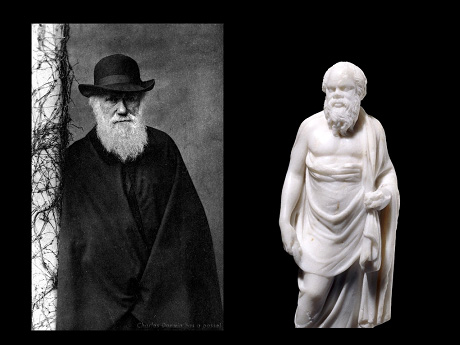 In Xenophon’s Symposium, this same correlation of the beautiful to the useful is exploited in a scene which offers a wonderful mixture of the comic and the philosophically profound. To understand the passage, it is important to be reminded that Socrates was famously ugly, above all for his snub nose, thick lips, flared nostrils. pot belly and bulging eyes. This fourth-century BC statue gives you the general idea, although no one image captures all his reported uglinesses. When he is placed alongside Darwin, the two cut strikingly similar figures, except that Socrates is like a simian parody of Darwin. This is acutely ironic in view of all those Victorian cartoons displaying a Darwin as apelike as the ancestry which he had devised for mankind.
In Xenophon’s Symposium, this same correlation of the beautiful to the useful is exploited in a scene which offers a wonderful mixture of the comic and the philosophically profound. To understand the passage, it is important to be reminded that Socrates was famously ugly, above all for his snub nose, thick lips, flared nostrils. pot belly and bulging eyes. This fourth-century BC statue gives you the general idea, although no one image captures all his reported uglinesses. When he is placed alongside Darwin, the two cut strikingly similar figures, except that Socrates is like a simian parody of Darwin. This is acutely ironic in view of all those Victorian cartoons displaying a Darwin as apelike as the ancestry which he had devised for mankind.
We can now turn to the Xenophon passage. In it Socrates, relaxing at a party, causes hilarity by taking on the dashing young Critobulus in a beauty contest. Socrates seeks to prove his own superior beauty by interrogating Critobulus, with both of them agreeing on the thoroughly Socratic starting premise that beauty is co-extensive with utility. Critobulus, it should be mentioned, was a well-informed member of the Socratic circle – the son of Socrates’ faithful friend Crito, later to be present both at Socrates’ trial and execution. That is why Socrates does not have to persuade Critobulus of his own theory of beauty, but is able simply to rely on his complicity. Socrates’ aim is to prove that he himself is beautiful, but he invites Critobulus to start from non-human examples of beauty, and Critobulus volunteers instances, such as the beauty of a shield or horse, already familiar to us from the philosophically more serious texts. ‘If’, explains Critobulus, ‘they are well manufactured in relation to the respective functions for the sake of which we possess them, or are naturally good in relation to whatever our needs may be, even these things are beautiful.’
This agreed subordination of beauty to the specific function served then becomes Socrates’ basis for re-evaluating facial features of his own which, if considered in absolute terms, would be judged hideous. Much like the humble dung-basket deemed beautiful for its functionality, in this comic scene Socrates declares that his own bulging eyes give him panoramic vision, like a crab; his flared nostrils are orientated to perceive smells from all directions; and his nose is so flattened as never to risk interfering with his line of vision. Hence, he concludes, he must have an exceptionally beautiful face.
The way in which Socrates’ correlation of beauty to function pervades even this humorous exchange between him and a member of his inner circle helps underline how distinctive it is of his outlook. It makes a further, surprising appearance in another passage of Xenophon, (6) where Socrates sets out his remarkable views on architecture, views which would not have sounded altogether out of place in the Bauhaus. His initial premise is that, in house design, beauty and utility are altogether inseparable. But it quickly becomes clear that not two but three values are being aligned, because the utility of a house is itself in turn explained largely in terms of its occupants’ enjoyment of it.
The house’s orientation, Socrates explains, should in particular be chosen to produce pleasant temperatures in all seasons. A design providing this kind of comfort, along with adequate security, will be sufficient to ensure that the most beautiful possible house is built. Further embellishments, he importantly adds, for example wall-paintings, are not only not necessary, but will actually detract from the occupants’ enjoyment of the house, and hence, implicitly, from its utility.
This last point is not further explained, but it is easy enough to see in it once again the motif of the gold shield. Gold, conventionally the height of beauty, actually becomes ugly when functionally redundant; and the same applies to functionally redundant architectural embellishments. Rather than merely being neutral or irrelevant to an artefact’s functionality, superficial embellishments dilute its overall utility, and thereby diminish its overall beauty as well.
Socrates’ insistence that beauty and utility invariably track each other has an obvious applicability to his creationist world-view. The world and its contents are both a functional and a beautiful product of divine craftsmanship, he would say, not because we have been lucky enough to get two things, utility and beauty, for the price of one, but because a thing’s beauty is itself the hallmark of its utility. Beauty, whether in an artefact, in a human body, or in an animal, is not an entirely independent value but an index of something’s efficient adaptation to its function.
In the context of evolutionary theory, this aesthetic principle might have been put equally effectively to work in accounting for the beauty which Darwin’s concluding words recognized in each new species as it emerged functionally adapted to its environment. The question ‘Why should nature be so beautiful?’ has, whether stated or unstated, been a prop of the creationist agenda since the Stoics first placed it there. And for all Darwin’s success in providing an evolutionary account of beauty in so far as differing conceptions of beauty have reflected different sexual preferences, he was able to provide no corresponding evolutionary account of why we should with such regularity judge the natural world itself to be beautiful.(7) A propensity to find nature beautiful seems unlikely to confer on a species any better chance of survival than it would otherwise have had. What seems needed here is not an evolutionary explanation of aesthetic subjectivity, but a conceptual account of what beauty is. And Socrates is well placed to offer one. Socrates would have told Darwin that functional adaptation accounts for the beauty of each life form, and that this must remain the case regardless of how that adaptation came about. He might have added that a god who painted the wings of butterflies for the edification of mankind would be as poor an arbiter of beauty as the architect who adds functionally irrelevant embellishments to his buildings. In short, although the ubiquitous beauty of the living world has done so much to sustain the creationist creed, paradoxically it is none other than Socrates, the father of creationism but also the first known theorist of beauty, who can provide Darwin with a key to disarming it.
If in this lecture I have been right to portray Socrates as the unsung founder of the creationist tradition, it may seem that I have granted undeserved heroic status to an arch-villain. I don’t think that that is at all the right way to look at it, or, in general, that the blame game has any part to play in the history of ideas. From the 5th century BC to the mid 19th century AD, belief in an intelligent creator was, quite simply, the intelligent option to choose. The evidence for it, once sketched by Socrates and systematically assembled by his successors, looked overwhelming. The efforts made in Socrates’ day by his rivals the atomists to construct a purely mechanistic explanatory model for the origins of life, based on random cause and effect operating on an infinite scale, were brilliant (that would be the subject for another lecture); but without the extra credibility that Darwinian insights could have provided, their theory did not gain the intellectual high ground.
Socrates’ creationist legacy, which continued to dominate European thought over the twenty-two and a half centuries from 399 BC to AD 1859, represents an indispensable stage in the process from which evolution itself evolved. Unless we set out to understand the powerful allure which creationism exercised on the foremost intellects, we have no chance of appreciating the monumental achievements of Charles Darwin in showing how, contrary to all expectation, the best interpretation of the evidence in fact robbed divine intervention of its largely unchallenged explanatory role. The allure of the creationist model was no doubt strengthened by the biblical authority it came to enjoy in the Christian era. But as its pagan origins amply confirm, its appeal ultimately rested on its sheer intellectual power as an explanatory hypothesis. Darwin may have known next to nothing of those pagan origins. But it is precisely the enduring tradition which Socrates had inaugurated that gives Darwin’s hard-won breakthrough its full meaning.
Footnotes and References
1: This episode is thoroughly analysed by A. Gotthelf, ‘Darwin on Aristotle’, Journal of the History of Biology 32 (1999) 3–30.
2: Xenophon, Memorabilia I 4 and IV 3.
3: Plato, G. 491a, Smp. 221e; X. Mem. 1.2.37.
4: Cf. Darwin, Origin, 219: ‘If it could be proved that any part of the structure of any one species had been formed for the exclusive good of another species, it would annihilate my theory, for such could not have been produced through natural selection.’
5: It is significant that the closest he comes to Paley’s view is well before he arrived at his evolutionary theory, in 1832 (Beagle Diaries, 11 January): ‘I am quite tired having worked all day at the produce of my net. — The number of animals that the net collects is very great & fully explains the manner so many animals of a large size live so far from land. — Many of these creatures so low in the scale of nature are most exquisite in their forms & rich colours. — It creates a feeling of wonder that so much beauty should be apparently created for such little purpose. — The weather is beautiful & the blueness of the sky when contrasted with white clouds is certainly striking.’
6: Memorabilia III 8.8-10.
7: ‘How the sense of beauty in its simplest form—that is, the reception of a peculiar kind of pleasure from certain colours, forms, and sounds—was first developed in the mind of man and of the lower animals, is a very obscure subject...’ (6th edn, p. 162, cf. 414).
Tour of the east coast of Canada, Summer 2007
Edward Turnham writes:
This year it was the turn of the East coast of Canada to receive the full Christ's-Choir treatment. The tour was highly successful and included Choral Evensong at St. James' Cathedral, Toronto.
 Tuesday 3rd July. 7:30pm - St George's Anglican Memorial Church, Oshawa
Tuesday 3rd July. 7:30pm - St George's Anglican Memorial Church, Oshawa
Wednesday 4th July. 7:30pm - St Mark's Anglican Church, Port Hope
Thursday 5th July. 7:30pm - All Saint's Anglican Church, Peterborough
Friday 6th July. 8:00pm - Christ Church, Belleville
Saturday 7th July. 7:30pm - St George's Cathedral, Kingston
 Monday 9th July. 7:30pm - Church of St John the Evangelist, Montreal
Monday 9th July. 7:30pm - Church of St John the Evangelist, Montreal
Tuesday 10th July. 7:30pm - St George's Anglican Church, Montreal
Wednesday 11th July. 7:30pm - St Matthew's Church, Ottawa
Thursday 12th July. 7:30pm - St Andrew's Church, Ottawa
Saturday 14th July. 7:30pm - St John's York Mills Anglican Church, Toronto
Sunday 15th July. 4:00pm - St James' Cathedral, Toronto
Sunday 15th July. 4:30pm - Choral Evensong, St James' Cathedral, Toronto
Tour of Ireland, 2008
 Sunset in Portstewart, looking toward Scotland
Sunset in Portstewart, looking toward Scotland
Paul Sutton, tour organizer, writes:
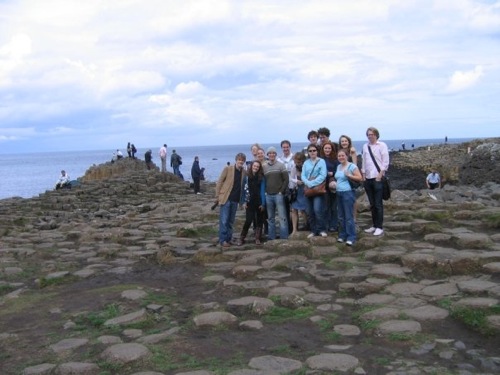 The Choir rounded off a successful year of high-profile concerts with a tour to Ireland. After a blearily early flight to Londonderry, the the week-long tour kicked off with a well-attended lunchtime recital in St Columb's Cathedral. Heading east along the north coast of Northern Ireland, the following two nights were spent with generous hosts in Portstewart, where the Choir were well-received in the packed-out Church of St John the Baptist.
The Choir rounded off a successful year of high-profile concerts with a tour to Ireland. After a blearily early flight to Londonderry, the the week-long tour kicked off with a well-attended lunchtime recital in St Columb's Cathedral. Heading east along the north coast of Northern Ireland, the following two nights were spent with generous hosts in Portstewart, where the Choir were well-received in the packed-out Church of St John the Baptist.
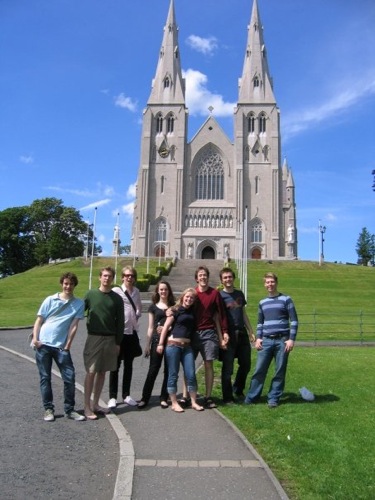 After a lunchtime recital and sung Mass in St Peter's Cathedral, Belfast, the Choir continued south along the road to Dublin, stopping for one night to give a concert in St Patrick's Cathedral, Armagh.
After a lunchtime recital and sung Mass in St Peter's Cathedral, Belfast, the Choir continued south along the road to Dublin, stopping for one night to give a concert in St Patrick's Cathedral, Armagh.
The remainder of the tour was spent in Dublin, the Choir staying in the very centre of the city for three nights. The lunchtime concert in the St Patrick's Cathedral, the Choir now under the direction of Julian Black, was a wonderful opportunity to experience the building's marvellous acoustic before returning for Evensong two days later. In the south of the city, a concert in St Bartholomew's Church completed the performance schedule, leaving the choir to enjoy the vibrant capital city, in particular, the customary Decani v Cantoris football match, in which Dec retained the hard-contested title.
Quincentenary tour of the USA and Canada, Summer 2005

Alex Jobling and Alison Campbell Smith, tour organisers, write:
July 2005 saw the Chapel Choir embark on another exciting and highly successful international tour – this time to the West Coast of Canada and the USA.
After spending the 4th of July watching spectacular fireworks in Seattle, we sang to a series of packed houses in Olympia (the capital of Washington state), Victoria, Vancouver and Kelowna, as well as the picturesque island of Salt Spring. Meeting many Christ’s and Cambridge alumni at each venue, we were warmly welcomed by our host families and churches.
Returning to Seattle, we performed to an audience of over 600 in St. Mark’s Cathedral – a wonderful night and a definite highlight of the tour.
The second half of the our trip began with a flight down to San Francisco, from where we drove to California’s State Capital, Sacramento. Another successful concert followed – despite the 40°C temperatures!
Our final days were spent in San Francisco, with two concerts and another tour highlight – singing the Sunday morning Eucharist at Grace Cathedral, which had a wonderful acoustic in which we all greatly enjoyed performing.
We concluded the tour with the traditional dec-can football match, which ended 2-2 after a spectacular equalizer from dec’s goalkeeper, departing Senior Organ Scholar Simon Jacobs!
Despite our busy schedule, everyone tried to fit in as much sightseeing as possible – tandem riding in Vancouver’s Stanley Park (and the broken elbow to show for it!), trips to Alcatraz and the Golden Gate Bridge, cable cars, museums, art galleries and much, much more. No wonder we all returned completely exhausted and in need of a holiday to recover!
REVIEWS
7th July - Church of St John the Divine, Victoria
Derek Barker, Times Colonist staff
"In the midst of life we are in death."
The seemingly timeless words from the 1662 Book of Common Prayer were scarcely three decades old when Henry Purcell set them in his Funeral Music for Queen Mary, performed at her burial in early 1695. Within the year, the 36-year-old composer would also be dead.
Although the program for Thursday's concert by the visiting Chapel Choir of Christ's College had, we were told, been planned some weeks ago; as the dreadful news from London continued to arrive, much of it assumed a whole and terrible new significance. What the concert demonstrated, though, beyond the obvious quality of the choir's music-making, is the remarkable power of music to console and uplift, even in such circumstances.
The opening work, part one of Thomas Tallis's Lamentations, announced a group well-founded in the great English choral tradition: beautiful tone, clean entries and careful attention to dynamics.
The three short extracts from Purcell's Funeral Music possessed a spare, even sparse, beauty; each was set mainly for four solo voices and organ, with the full choir only joining in at the close. The knowledge that music like this would be composed for one's funeral would almost make it worth dying.
One of the evening's greatest challenges, both technically and emotionally, was Barber's Agnus Dei, a choral arrangement of the Adagio for Strings, a work that has assumed the role of ceremonial mourning music in recent years. David Rowland took the music at a flowing tempo, yet there was no lack of depth, either to the sound or to the feeling. For perhaps the only time in the evening, there were ocassional insecurities of intonation, yet the massive climax and the lovely close more than compensated.
Space precludes a detailed discussion of all the music performed, but that English tradition was well-represented, with Parry's "At the round Earth's imagined corners" providing a wonderful example of its confident best, in the high noon of the British empire. The performance boasted huge dynamic contrasts and some marvellously acerbic harmonies, which seemed to anticipate later composers, particularly Walton.
Other highlights included a splendidly muscular performance of Kenneth Leighton's Paean by organist Simon Jacobs, a lively and propulsive motet by Bach, Elgar's inimitable setting of Psalm 29 and two short pieces by Faure, all lush harmonies and almost saccharine organ.
The entire evening was a delight from start to finish: for lovers of fine singing and of the English tradition in particular, it was an evening to treasure.
Tour of Australia and New Zealand, Summer 2006
posing where Bilbo Baggins made his birthday speech in Lord of the Rings
Helen Walter and Margaret Hartley, tour organisers, write:
July saw the college Chapel Choir embark on a tour of Australia and New Zealand. The choir had little time to recover from a thirty-hour flight before being launched into a series of packed concerts in Sydney, Katoomba, Bathurst and Canberra. The group also gave a series of workshops, which were well attended by members of local choral societies wanting to know more about life in a Cambridge choir.
On returning to Sydney, the choir gave the first concert in St Philip's Church for many years, and were met by many Christ’s and Cambridge alumni, several of whom kindly hosted choir members for their final night in Australia.
The second leg of the tour saw the Choir visiting the North Island of New Zealand. Highlights included a performance in the beautiful acoustic of Auckland’s Holy Trinity Cathedral, recorded by Radio New Zealand for broadcast later in the year. Once in Wellington, a workshop with 70 primary school children led to a joint performance of Evensong in the spectacular Cathedral. The itinerary concluded with concerts in Palmerston North, Cambridge and Hamilton Cathedral, rounding off a packed schedule giving thirteen concerts, two choral workshops, two services and three radio broadcasts within the space of three weeks.
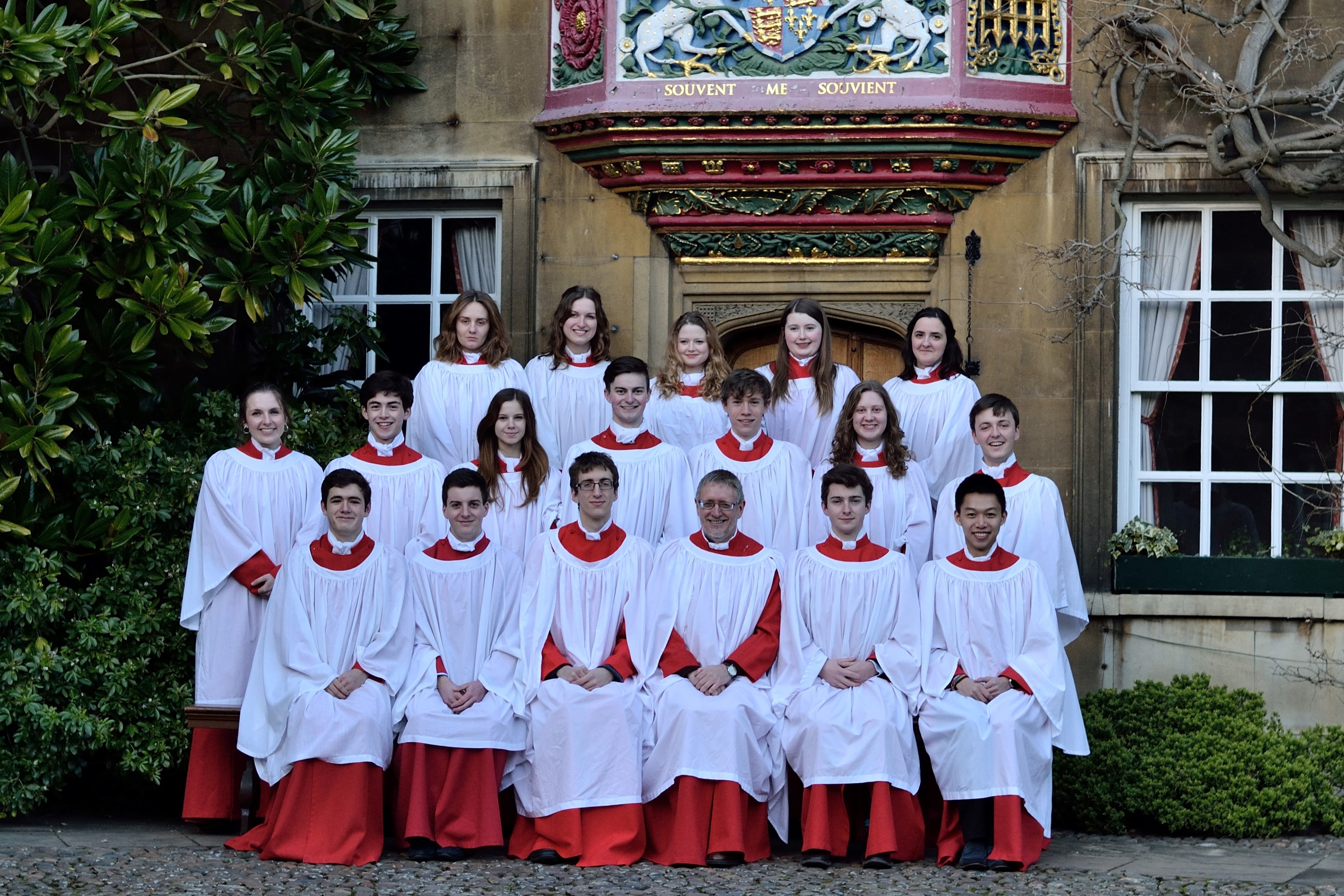
**We have vacancies for all voice parts to start in October 2025. Whether you are a fresher or continuing student, undergraduate or postgraduate, at Christ's or another college, we would love to hear from you. Please send an email to choir.admin@christs.cam.ac.uk**
Why Christ's?
Christ's College Choir combines an excellent reputation and very high musical standard with a warm and welcoming atmosphere. The Choir's manageable weekly schedule allows members to get involved in a range of other university activities. There are no restrictions on what subject members of the choir may be studying.
Key information
The standard weekly schedule for choir members at Christ's runs as follows:
Wednesday: 6:00pm rehearsal
Thursday: 5:20pm rehearsal; 6:30pm evensong; 7:30pm formal dinner
Sunday: 4:15pm rehearsal; 6pm evensong; drinks and formal dinner following the service
The choir also sings twice-termly compline in small groups of around 8 singers.
How to join: Contact the Director of Music or choir.admin@christs.cam.ac.uk for further information on joining the Choir as a singer or Organ Scholar.
Members of the Choir are selected by audition with the Director of Music. Commitment, potential and enthusiasm are essential, and whilst previous experience of choral singing is common, we welcome applications from singers who haven't had the opportunity to sing in a regular choir. For more information on the audition process, please get in touch.
The choir's composition is normally around 6 sopranos, 5 altos, 4 tenors and 6 basses. These are approximate numbers as there are no fixed quotas.
Most choir members hold Choral Exhibitions, some awarded as a result of the Choral Trials, some in October, and others during the course of the academic year. There are no specific limits on the number of awards made at the Trials, and in the past Christ's has always had sufficient space for all candidates of appropriate vocal and musical ability.
Choral Exhibitions can be awarded to students in any subject. While it is expected that Choral Exhibitioners will participate fully in the College's musical life, the weekly schedule of rehearsals and services enables individuals to participate in other activities, including College and University sports teams, stage events and any number of operas, musicals and operas put on during term time.
Benefits of membership include:
- Vocal training with leading UK singers, paid for by the Choir. Current members study with Ghislaine Morgan, Richard Edgar Wilson and Miriam Allan. Choral scholars receive four hours of vocal tuition in Michaelmas term, four hours in Lent term, and two hours in Easter term.
- Free formals after Thursday and Sunday services and additional feasts, drinks receptions and other events throughout the year.
- International travel: the Choir undertakes an extensive annual tour of up to three weeks. Read more here.
Recent destinations have included Singapore, New Zealand, Canada, Australia, and the United States. - Concerts around the UK, including a regular series of Christmas concerts in St John's Smith's Square, St Martin-in-the-fields and a number of English Heritage properties.
- The chance to record CDs and broadcast.
The Choir has broadcast with BBC Radio 3, Radio 4, Classic FM and a number of international radio stations in recent years. - A £100 annual honorarium for Choral Exhibitioners
The choir toured Singapore and New Zealand in July 2019, will tour the East Coast of the USA in July 2022. Recent engagements before the Covid-19 pandemic included a performance of Mozart's Requiem in St Martin-in-the-fields and Christmas concerts in English Heritage properties as well as top London venues including St John's Smith Square. In the 2021/22 academic year, the choir sang regularly at the Royal Military Chapel (The Guards' Chapel).
Organ Scholars
The College normally has two or three Organ Scholars at any one time. They assist the Director of Music in the running of the Choir, accompany services and concerts, and, on occasions, conduct the choir. Further information can be found on the Organ Scholars pages.
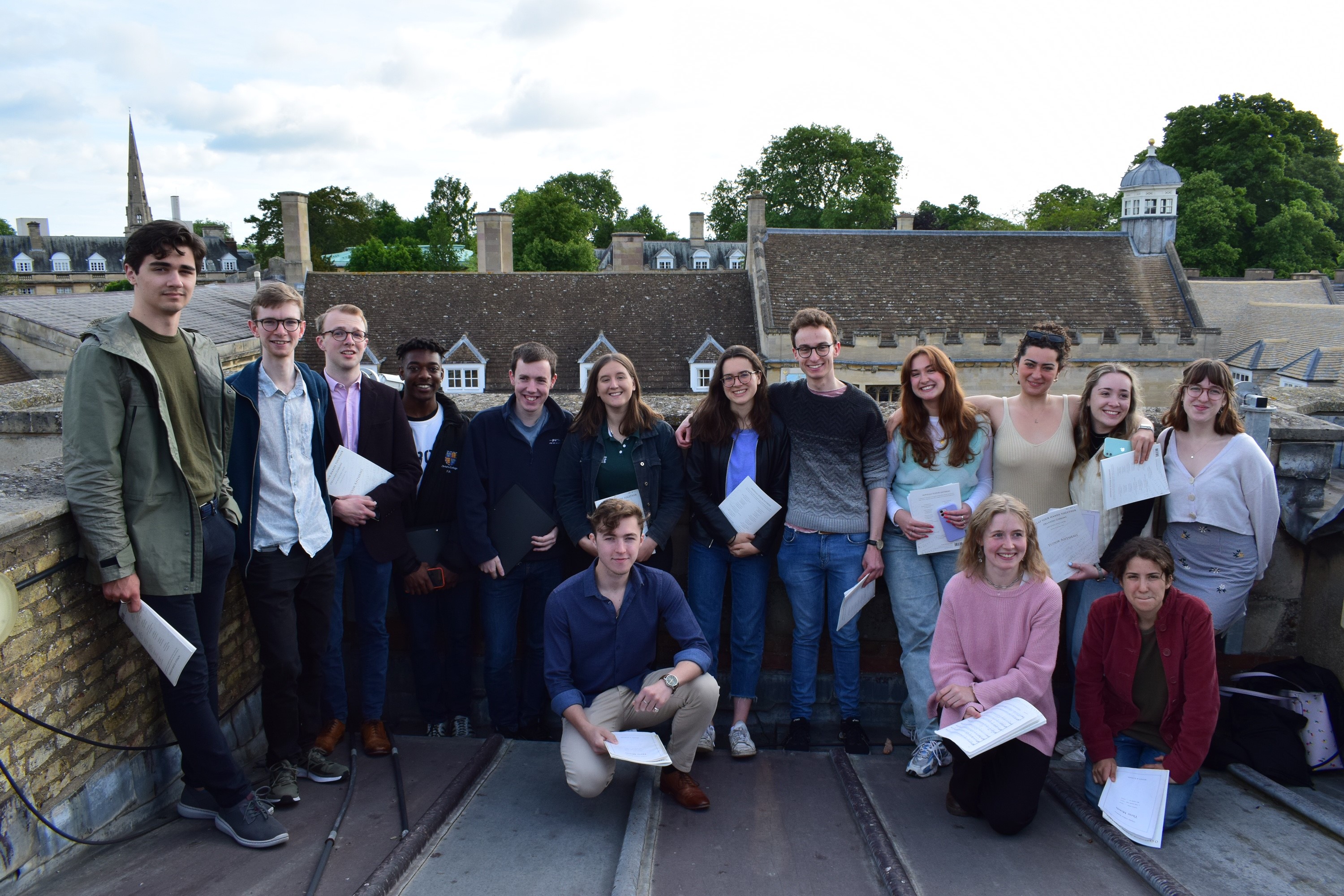

David Rowland was Organ Scholar at Corpus Christi College and during his third year he assisted the Organ Scholar at Kings by playing regularly at services. After graduating in 1978 he pursued research in Cambridge, while still playing the organ and in 1981 he won the prestigious St Alban's International Organ Competition. In the following year he was a major prizewinner at the Dublin International Organ Competition. Subsequently David became a lecturer in the music department of Glasgow University and then Director of Music at Christ's College Cambridge, where he has conducted the choir since 1984. More recently, from 2002-4 he conducted the Welsh National Youth Choir.
In addition to conducting he records, broadcasts and performs regularly in London's South Bank concert halls and in many other venues nationwide, on harpsichord, organ and early piano. David joined the staff of the Music Department of the Open University in 1989. He was Dean and Director of Studies for the Faculty of Arts from 2007-14, and was Professor of Music and Director of Taught Postgraduate Studies until his retirement in 2024. David is now Emeritus Professor. He pursues research into the performance practice of the early piano, and in particular into the career of Muzio Clementi, on which subjects he has written four books and other scholarly material.
Please email choir.admin@christs.cam.ac.uk for an up-to-date biography for David or the Choir.
All services are open to the public, and all are very welcome. The normal times during Full Term are:
Thursday: 6:30pm
Sunday: 6:00pm - with a guest preacher and drinks served afterwards in the antechapel
At Choral Evensong services, the Choir sings a setting of the Magnificat and Nunc Dimittis, alongside the responses and a psalm. Mass settings in Latin or English are sung at less frequent Choral Eucharist services. At both services an anthem of up to about 5 minutes is sung. The Choir is keen to support composers from within College and beyond, and frequently premieres new works.
Current music list: Easter 2025.
Singing atop the Great Gate on Ascension Day 2017
Previous service lists:
- Lent 2025
- Michaelmas 2024
- Easter 2024
- Lent 2024
- Michaelmas 2023
- Lent 2023
- Michaelmas 2022
- Easter 2022
- Lent Term 2022
- Michaelmas 2021
- Lent 2020
- Michaelmas 2019
- Easter 2019
- Lent 2019
- Michaelmas 2018
- Easter 2018
- Lent 2018
- Michaelmas 2017
- Easter 2017
- Lent 2017
- Michaelmas 2016
- Easter 2016
- Lent 2016
- Michaelmas 2015
- Lent 2015
- Michaelmas 2014
- Easter Term 2014
- Lent Term 2014
- Michaelmas Term 2013
We have no vacancies for the current academic year (2024-25), but we have spaces for all voice parts beginning in October 2025. Please do get in touch!
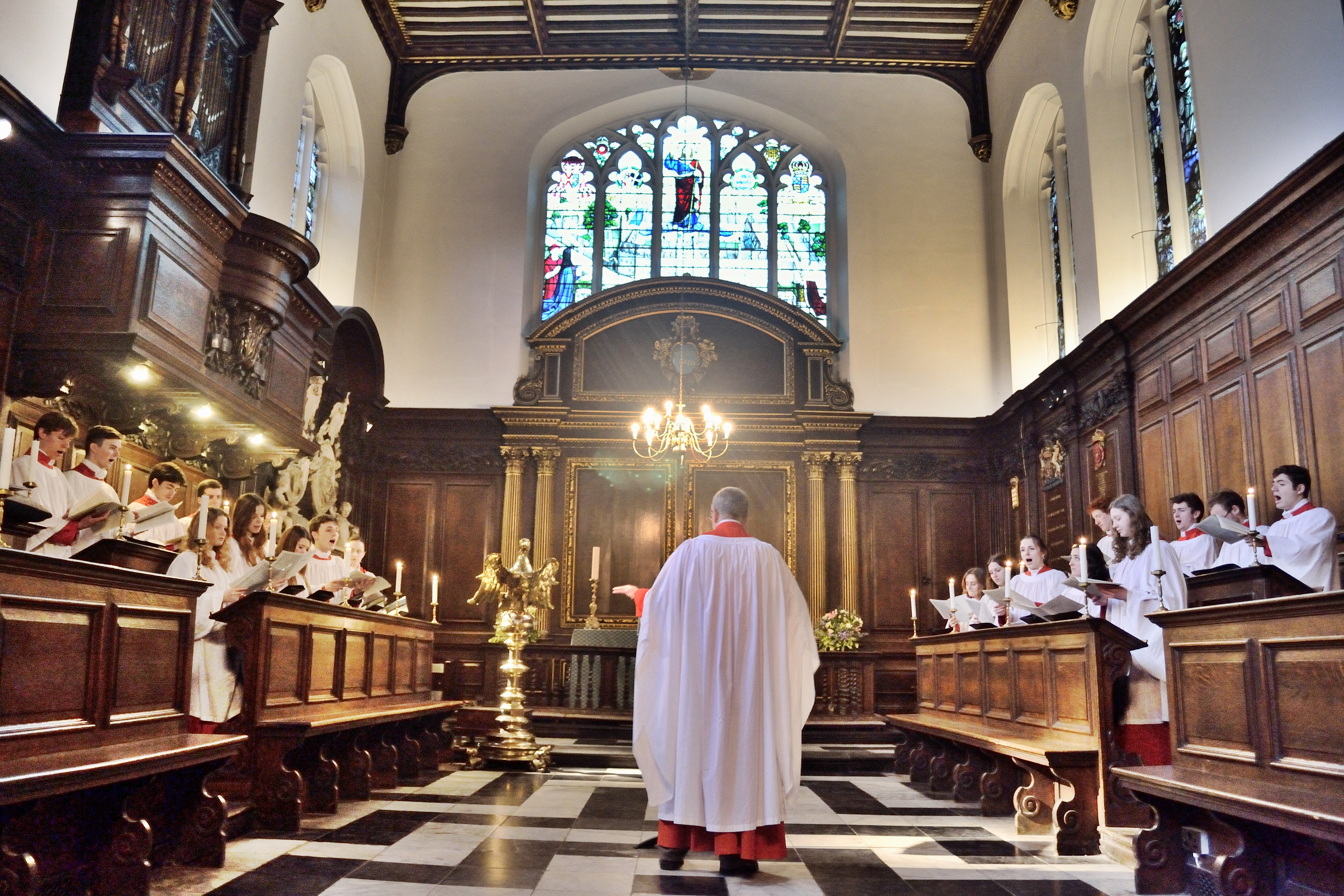
In rehearsal in Christ's College Chapel
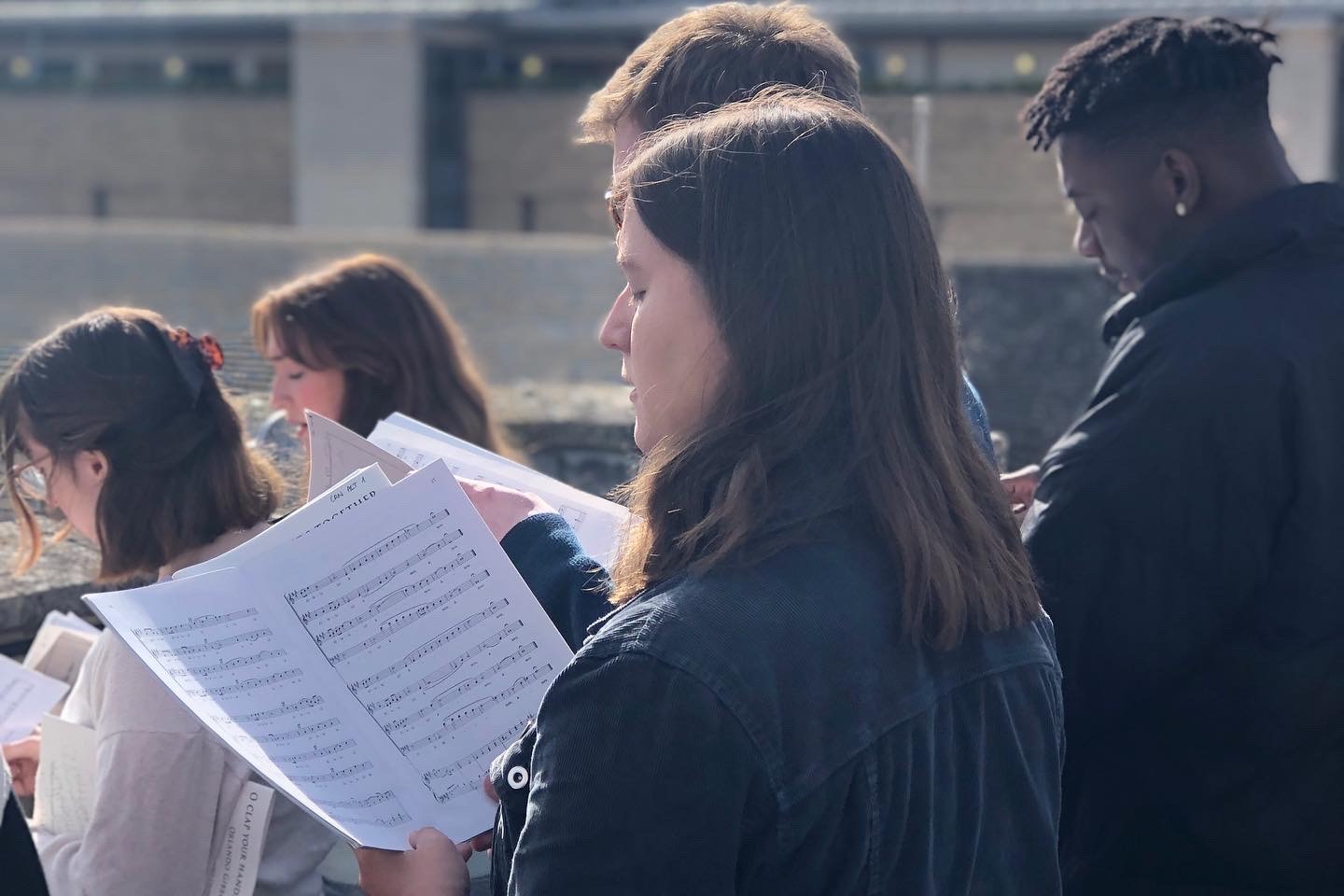
Christ's College Chapel Choir commits to singing weekly services on Thursdays and Sundays in the College Chapel during Full Term, and makes a vital contribution to college life by singing at feasts, weddings, annual Christmas and Passiontide services and alumni events. Additionally, choir members commit to an exciting range of major international tours, recordings, broadcasts and concerts around the UK.
Choir members are selected by audition either before or after beginning study at Cambridge, and each is expected to be of a very high musical standard. Most hold Choral Exhibitions, and all benefit from regular vocal training with excellent singing teachers, paid for by the College. Many ex-Christ's choristers and organists are now professional singers and musicians, performing with ensembles such as The Sixteen and Ex Cathedra, and enjoying distinguished solo careers.
It is possible to book the choir, organ scholars, small groups of singers and/or individual singers for weddings, funerals, memorial services and other events. For more information about fees and availability, please contact Tom Baarda on choir.admin@christs.cam.ac.uk.
History and Tradition
The Chapel Choir today continues the age-old traditions of maintaining chapel choirs in Cambridge, and Christ's has enjoyed a rich musical history. Lady Margaret Beaufort, the college Foundress, left a bequest of three organs on her death in 1509. The Chapel Choir was originally made up solely of male voices, the upper parts being sung by boy trebles.
Even before Christ's College became mixed in 1979, women were admitted from other colleges to sing the upper parts, and since then the choral sound has developed through "the quality of the female undergraduates who bring precision, sensitivity, and increasingly mature musicianship to the upper lines" (Church Times).
Today's Choir is widely recognised as one of Cambridge's finest mixed-voice ensembles. Recent CD recordings and concert reviews stand as testament to its ability and broad repertoire.
Choir Life
Members rehearse several times a week with one of Cambridge's finest choral groups, becoming familiar with an extraordinarily broad repertoire ranging from complex renaissance polyphony to challenging contemporary works. The choir has an active social scene, eating together at formal and running weekly 'Choir Tea' and cake, as well as playing in an inter-college choir football league (see below). Choir members forge friendships which last a lifetime.

The Chapel Choir continues to support the wider musical life of Christ's through its involvement with Christ's College Music Society. Choir members often organise and perform in concerts, as well as organising dinners, concert after-parties and other social events alongside the society. Most notably, choir members perform at a termly Choral Scholar's Recital, showcasing the voices of the choir through a combination of solo and group performances.

Repertoire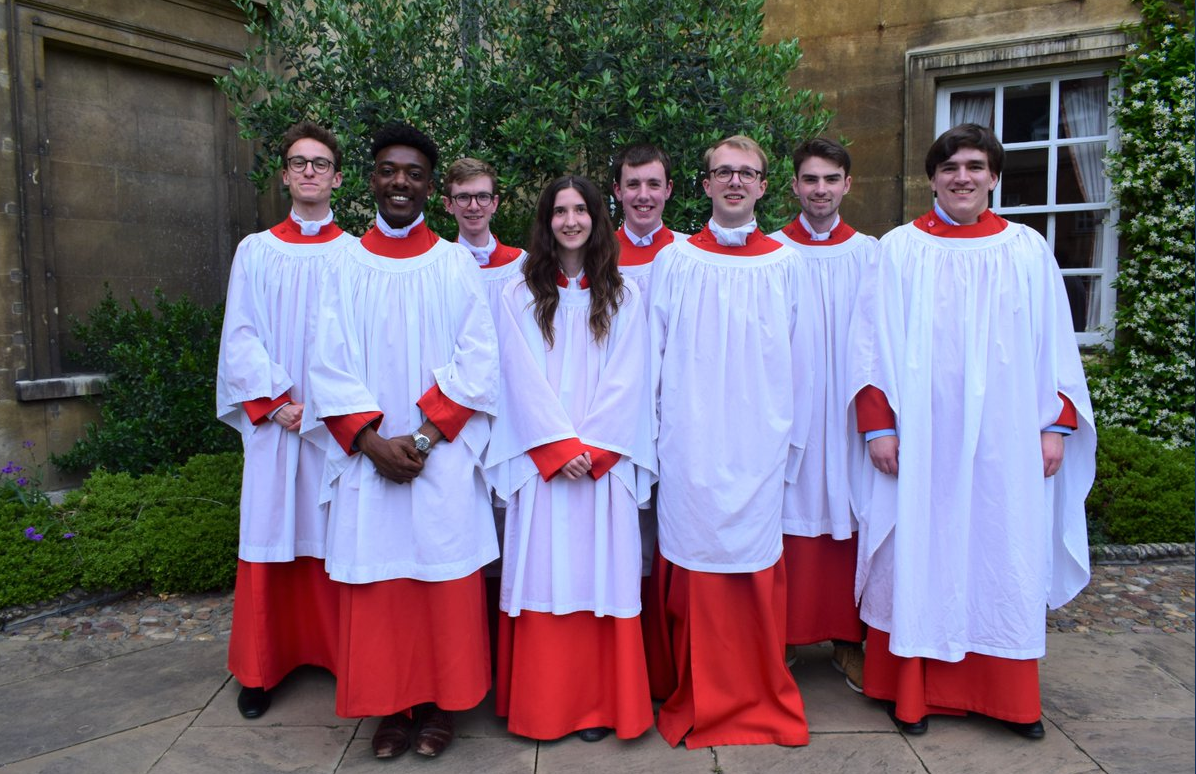 The Choir's repertoire embraces sacred and secular music from the 15th century to the present, enjoying a broad concert repertoire and selection of service music. Recent programmes have included Mozart's Requiem, Bach's Mass in B Minor, Scarlatti's Stabat Mater and Handel's Messiah, often performing with orchestra. They have also performed Bach and Brahms motets, Mozart and Kodaly, extended works by Howells, Britten, Faure and Parry, and a selection of secular music. The choir has a commitment to singing music by female composers; our services regularly feature in the university-wide Minerva Festival, and the choir has recently recorded two CDs of music by Annabel Rooney. Information about our services and music is provided here.
The Choir's repertoire embraces sacred and secular music from the 15th century to the present, enjoying a broad concert repertoire and selection of service music. Recent programmes have included Mozart's Requiem, Bach's Mass in B Minor, Scarlatti's Stabat Mater and Handel's Messiah, often performing with orchestra. They have also performed Bach and Brahms motets, Mozart and Kodaly, extended works by Howells, Britten, Faure and Parry, and a selection of secular music. The choir has a commitment to singing music by female composers; our services regularly feature in the university-wide Minerva Festival, and the choir has recently recorded two CDs of music by Annabel Rooney. Information about our services and music is provided here.

Dr Matthew Kenneth HIGGINS
Fellow 2005 to 2010
Email: mkh20 "at" cam.ac.uk />
Website: http://www.bioc.cam.ac.uk/people/uto/higgins.html
During cerebral malaria, parasite infected red blood cells block tiny blood vessels in the brain, leading to coma, neurological damage and death. In placental malaria, infected red blood cells bind to the placenta causing miscarriage, premature birth and death of mother and child. The interactions at the heart of both of these disease phenotypes involve PfEMP1 proteins, produced by the parasite and displayed on the surface of the infected red blood cell (1). These PfEMP1 proteins interact with human receptors, tethering or clumping the infected erythrocytes and causing the symptoms of disease. Our major goal is to investigate the structures of these PfEMP1 proteins and the molecular basis for their interactions with human receptors.
